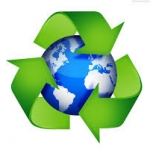Posts Tagged ‘how to improve America’s recycling program’
More Recycling, Please.
Many of us are old enough to remember the days before recycling bins, when bottles, cans, and plastic all went into the trash, no questions asked. As a nation, we’ve come a long way since then—over 87 percent of us currently have access to curbside recycling programs—but much work remains to be done. In fact,…
Read More »
